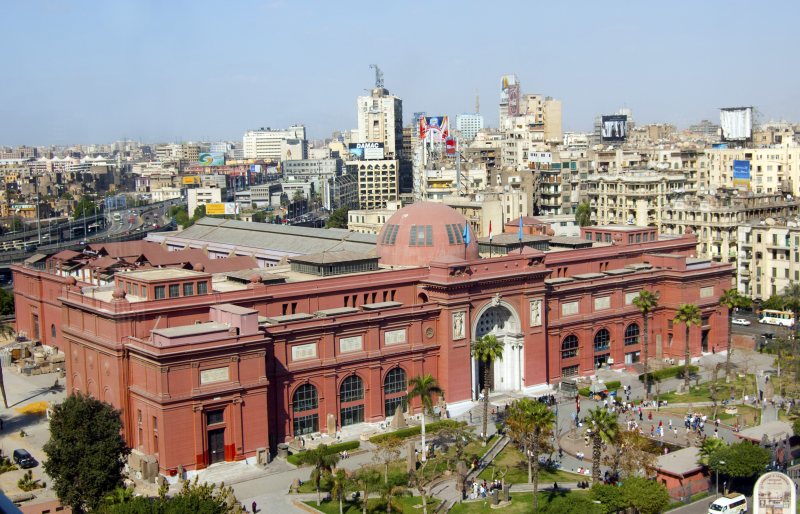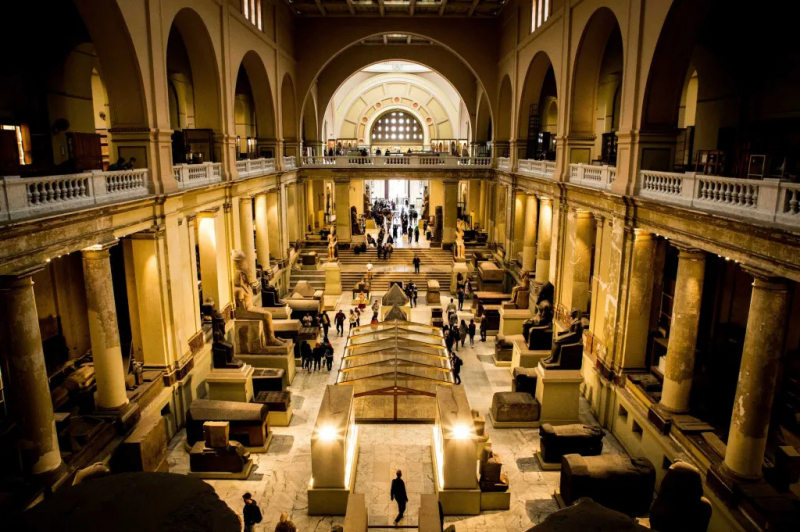Egyptian Museum
The Egyptian Museum is the Middle East's oldest archaeological museum and one of the most beautiful historical sites in Egypt, and it includes the world's greatest collection of Pharaonic artifacts. The museum houses an enormous collection covering the Predynastic Period to the Greco-Roman Era.
The building's architect was chosen in an international competition in 1895, the first of its type, and was won by the French architect, Marcel Dourgnon. Khedive Abbas Helmy II dedicated the museum in 1902, and it has since become a historic landmark in downtown Cairo, housing some of the world's most exquisite ancient treasures.
The museum is unique in its display of Egyptian civilization's whole history, particularly artefacts from the Pharaonic and Greco-Roman periods. A variety of enormous and heavy items, including giant statues located inside the main atrium, may be found on the ground floor. The museum had over 100,000 objects in its collection at one point. However, due to the museum's busy and inadequate area, the majority of the relics were never shown.
The entire tombs of Yuya and Thuya, Psusennes I and the riches of Tanis, and the Narmer Palette marking the unification of Upper and Lower Egypt under one ruler, are among the museum's important objects. The museum also exhibits magnificent statues of the ancient monarchs Khufu, Khafre, and Menkaure, who built the Giza plateau's pyramids. This very large museum is completed with an enormous collection of papyri, sarcophagi, and jewelry, among other things.
Location: Cairo












